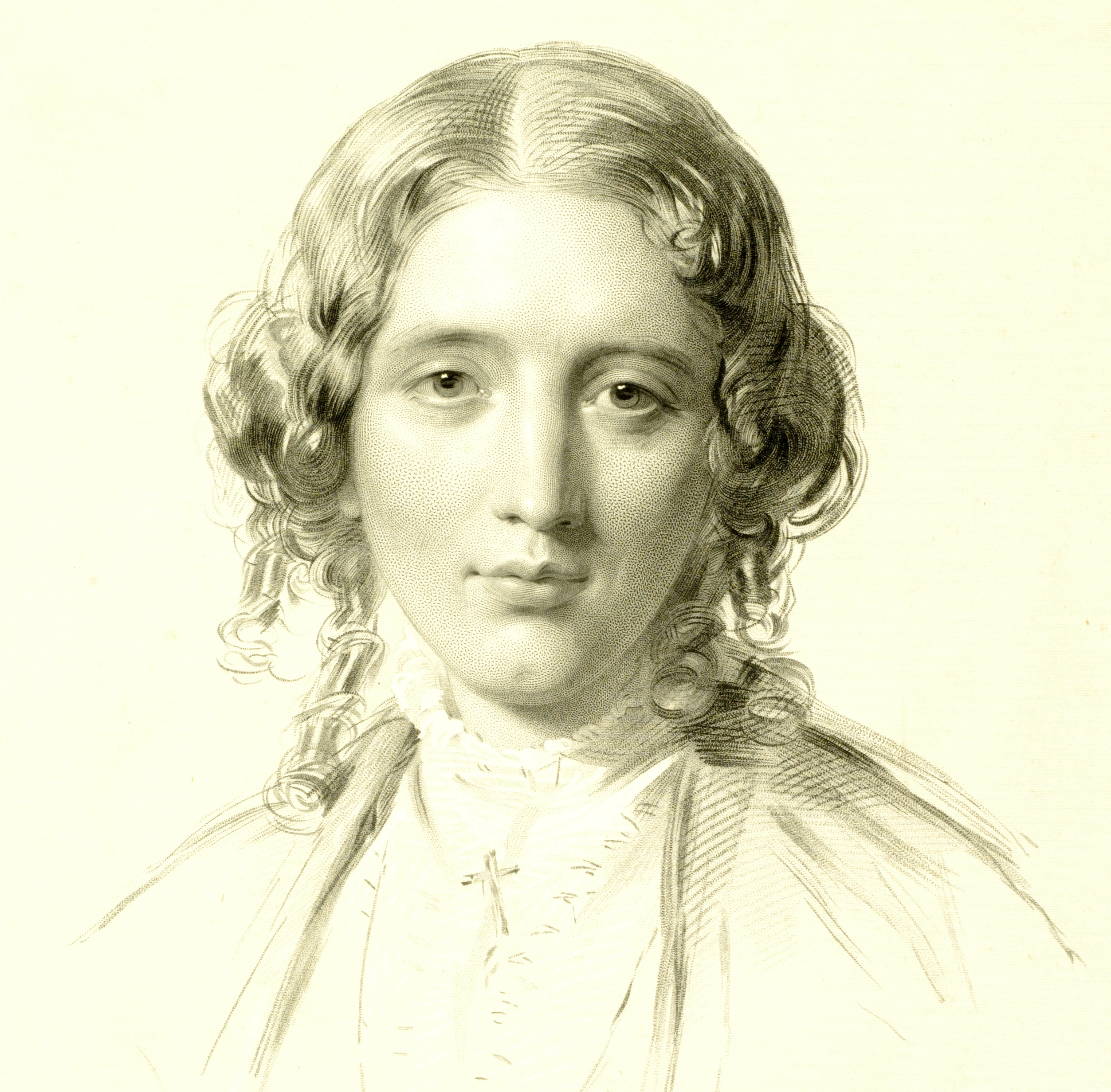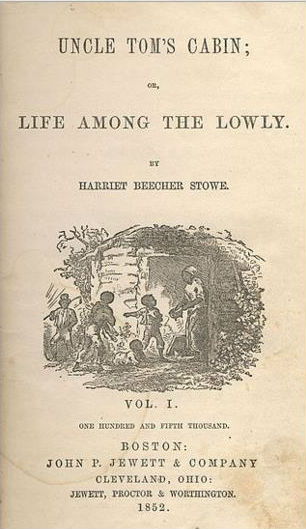How to Get People to Share Your Content

If you have ever wanted to figure out how to get people to share your content and attract more visitors, then you’ll want to pay close attention to this final post in my series on the power of suspenseful, serialized content.
In my last post, How to Create Content That Will Hold People’s Attention and Keep Them Reading, I shared the conclusion of the amazing true story of what happened when Charles Dickens died in the middle of writing his last book.
I told you the unbelievable story which involved:
- A séance
- Author Arthur Conan Doyle (creator of Sherlock Holmes)
- The surprising way the conclusion to his story was written 3 years after his death
And in the process, I taught you lessons that you could learn from this that will help you to create content that will hold people’s attention.
If you haven’t read the previous posts in this series, then check out the first two installments below:
PART 1: How and Why Content Marketers Should Use Serialization
PART 2: How to Create Content That Will Hold People’s Attention
Today I am going to conclude this series with a little-known story of how the best-selling novel of the 19th century (second if you count the Bible) actually began as a series of articles in a newspaper.
I am also going to share with you some modern-day case studies that reveal the power of serialization.
And by the time we’re through, I’ll also show you some important lessons on how to attract more visitors and get people to share your content that we can learn from them.
Are you ready? Here we go…
(I want to thank Roger C. Parker from PublishedandProfitable.com for originally suggesting that I look into this story.)
The Little-Known Origin of the Best-Selling Book of the 19th Century (Besides the Bible)
When she died at her home on July 1, 1896, the New York Times said this of her death “(her death) marks the extinction of genius in a family, and is one of the closing leaves in an era of our century. ”
Her hometown newspaper wrote this about her death… “(Her death)… removes from this world one of the most interesting and conspicuous figures of this generation.”
- Who was this woman?
- And how did she gain such an amazing reputation?
Well, it all began in 1851, when she was contacted by The National Era’s publisher Gamaliel Bailey.
She was asked to write a story that would run in installments in the paper.
You see, she was an author of a broad range subjects.
She had written: children’s text books, biographies and religious studies, advice books on homemaking and even a book on childrearing.
But what The National Era wanted would be different than anything she had written before.
Even though she could’ve never imagined it at the time, by choosing to do this she would be propelled into international fame and cement her place in history.
And the power of serialization and suspense is one of the reasons for her success.
Let me explain.
Accidentally Unleashing the Power of Suspenseful, Serialized Content
It all began with these 65 words that she wrote for the first installment for The National Era…
Chapter I.—In which the Reader is introduced to a Man of Humanity.
Late in the afternoon of a chilly day in February, two gentlemen were sitting alone over their wine, in a well-furnished dining parlor, in the town of P———, in Kentucky. There were no servants present, and the gentlemen, with chairs closely approaching, seemed to be discussing some subject with great earnestness.
This story for The National Era, which she thought would only be three or four installments, ended up taking on a life of its own and by the time she was done she had written forty installments!
The first installment of the story appeared on June 5, 1851. By 1852, the serial’s popularity led to it being published as a two volume book.
Who was this woman? What was the book?
The woman’s name was Harriett Beecher Stowe and the book she wrote is simply known today as Uncle Tom’s Cabin.
Uncle Tom’s Cabin was a runaway best-seller, selling 10,000 copies in the United States in its first week; 300,000 in the first year; and in Great Britain, 1.5 million copies in one year.
And, as I said, it became the best-selling novel of the 19th century.
How was this accomplished?
Well, obviously Stowe’s was a great writer and the topic that the paper asked her to write about really struck a cord with her audience.
But even considering these facts, I believe that the book’s unbelievable success can’t be separated from the way it was first presented to the public in The National Era.
I believe that the reason Uncle Tom’s Cabin was such a successful book is because Stowe created it first in a serialized and suspenseful form.
Let me show you an example from the book.
Watch how she used suspense at the end of that first installment of the story that appeared in the June 5, 1851 issue of the paper…
And so fell George’s last hope—nothing before him but a life of toil and drudgery, rendered more bitter by every little smarting vexation and indignity which tyrannical ingenuity could devise.
A very humane jurist once said, the worst use you can put a man to is to hang him. No, there is another use that a man can be put to that is worse!
[to be continued.]
—
Do you see how she left her readers in suspense? I love it!
What is the other use of man that is worse than hanging him?
I don’t know… but I want to know!
You know with that ending that Stowe’s readers couldn’t wait to read the next installment.
In my last post in this series, I gave you some benefits of content serialization.
I talked about benefits you receive from using it on both a “Micro-Level” and “Macro-Level” .
Today I want to give you four more reasons why you should create suspenseful, serialized content.
4 Ways Suspenseful, Serialized Content Will You Help Create Content Marketing That Will Get People to Share Your Content and Attract More Visitors
1. It increases the chance that your content will go “viral”.
This is one of the reasons that I believe that the serialized format is an important factor in the success of Uncle Tom’s Cabin.
By the time it was published, Stowe’s audience had been exposed to the story forty times. That means that she left them hanging with some form of cliff-hanger thirty-nine times.
Can you imagine how many conversations about the story must have taken place each time there was a cliff-hanger?
That meant more people heard about the story and became interested because it was in a serialized format than would have if it was presented all at once.
If you’ve been wondering how to make your content go viral or how to get more people to share your content on social media, then suspenseful, serialized content is one thing you definitely need to focus on.
But that’s not the only benefit of suspenseful, serialized content. The next benefit will impact the content itself.
2. It allows you to create better content.
You’re probably thinking, “Come on! How can serialized content help me create better content?”
I don’t blame you for being doubtful, but give me a second to explain and I think you’ll agree.
You see, all of us are trying to create something important and epic.
- Something we’ll be proud of
- Something that will impress our peers
- Something our audience (think prospects or customers) will love.
But it’s hard to do this once, let alone continue doing it.
Jay Acunzo,VP of Platform NextView Ventures and former Senior Manager of Content Team for HubSpot, explained the simple solution to this problem in one of his blog posts.
Jay said this…
When something works, don’t do more like it. Do more with it.
Many times content creators and content marketers are just pushing out more and more content without much of a pause in-between.
This gives no time for their content to be discovered, shared or promoted.
And worst of all, it gives them no time to figure out what’s working or even why.
I believe that creating serialized content enables us to overcome this.
That’s because in the process of releasing our content we gain feedback from our audience, see what they want and what works, and then we can do more with the topics that resonate with our audience.
Do you now see why I say serialized content can help you create better content?
But creating better content that has a higher chance of going viral isn’t all that serialized suspenseful content can do for you.
It can also enable you to overcome a common dilemma that many content creators face:
How do you create content that search engines like, but that people will still want to read?
Keep reading and you’ll see how suspenseful, serialized content will help you overcome this…
3. It allows you to tap into the power of long-form content while presenting it in more “bite-sized”, reader-friendly chunks.
In an article on SearchEngineLand.com called The SEO And User Science Behind Long-Form Content by John E. Lincoln, John shared the importance of long-form content for SEO purposes…
Back in 2012, serpIQ conducted a study involving more than 20,000 keywords. The results showed that the average content length of each of the top 10 results was more than 2,000 words. The average number of words for the content in the #1 spot was 2,416. For the #10 spot, the average number of words was 2,032.
That evidence is fairly conclusive. If you want your articles to rank well, consider using long-form content.
Long-form content is great for SEO, but it can be a problem when people’s attention spans are less than a goldfish’s.
But using suspenseful, serialized content helps us overcome this problem and still use long-form content.
How? Simple.
We do this by doing what I call “bite-sizing” your content over a series.
Long form content is great, but you don’t have to write a novel each time you create content.
EXAMPLE:
Instead of posting a 3,000 word post, you can use the same content to create a post that is a long enough to make the search engines happy (say 1,500 words) and then use the rest of the content to create another post that’s another 1,500 words.
(If you use the right methods, you can keep people’s attention – even people with short attention spans.)
Do you see why I think suspenseful, serialized content is so powerful?
It enables you to create better content, in a form that search engines and actual humans love, and to create it in a way that it has a higher chance of going viral.
But let me give you one last reason it’s powerful.
Then I’ll share with you two case studies of people who have used serialized their content marketing.
4. It allows you to build momentum.
In an interview called Working with Long Form Content, on CreateYourNextCustomer.com, Bradley H. Smith, the director of marketing at PR Newswire & Vintage, reveals that he has been very successful in breaking down long form content into consumable pieces he can share with his audience.
In the interview, Bradley shared 6 key tips to keep in mind when serializing content.
One of the tips he shares reveals why “bite-sizing” your content is so powerful. He says it will…
Extend the life of your content. Smith also explained that serializing content, especially an industry study, extends the content’s lifecycle. Single long-form content has a huge readership peak when first published, but generally has a perilous drop.
By “bite-sizing” your content, you are able to have a more consistent flow of traffic and a larger overall audience.
Instead of just getting a ton of people to just visit your site tomorrow, serialized content will allow you to see a lot of people visit tomorrow, next week, the week after, etc.
(This is assuming you’re posting a new installment once a week.)
For those of you who are doubting that this will actually work when used with content marketing in the real world, I have some two studies that will show you that it can.
Case Studies of Companies and Individuals Who Have Tapped into the Power of Suspenseful Serialized Content
1. Will It Blend?
So you’re doubting suspenseful, serialized content actually works in the real world for everyday products?
Well, how about a blender company as an example? You can’t get much more “everyday” than that!
Blendtec is a company that has become famous for their serialized content marketing.
How does a Blender company get famous for serialized content? It all starts with the founder.
Tom Dickson is the founder of Blendtec. And Tom is an inventor.
Back in 1975, Tom’s curiosity was piqued when he used a vacuum to clean up some spilled wheat kernels.
This curiosity drove him to revolutionize the home wheat milling industry, taking it from stone grinding to his patented stainless steel milling heads.
But, like most inventors, Tom didn’t stop there. He dreamed of inventing the perfect mixer using the freshly milled flour from his mill, so he could make homemade bread in minutes.
And that is how he came up with the Blendtec Blender.
But Tom is a unique sort of guy.
In order to test how strong his new blender was, he decided to try blending 2x2s. And guess what? It worked!
So how did he go from that to producing viral videos?
George Wright, Blendec’s marketing director, heard about Tom’s habit of testing the blades by blending boards, so he had an idea.
Why not video record Tom blending up items that you normally can’t (and probably shouldn’t!) blend?
An article on WordTracker.com called, Wordtracker Academy Viral marketing insights from WillItBlend.com, Rachelle Money tells what happened next…
It’s amazing how far you can make $50 go. In November 2006 the guys at Blendtec bought a white lab coat, some marbles, a couple of McDonald’s Extra Value Meals, a rotisserie chicken, a garden rake and some safety glasses. They then set about filming five videos featuring their boss, Tom Dickson, who asked, “Will it blend? That is the question.” He then blitzed the various items into smithereens.
Five days after posting the videos on their specially designed website, Will it Blend?, and on YouTube, Dickson’s then marketing director, George Wright, came to him and excitedly said: “Tom, we’ve hit a home run. We just had six million views on YouTube.” Dickson replied: “Who Tube?”
And they didn’t stop there.
They continued adding more videos of them blending other strange items.
People loved the videos! They kept coming back to see what Tom was going to blend next! (See the suspense George tapped into?)
The videos became so popular that they became a series that Blendtec featured on a separate site for called WillItBlend.com.
The Results
And what kind of results did this suspenseful, serialized content have?
According to a report a report from SocialLens.com, Christian Briggs revealed that after they created 186 videos these are some of their amazing results:
- Blendtec’s retail sales increased by 700 percent
- Its YouTube site has 200,000+ subscribers
- They were featured on major mainstream media outlets like The Today Show, The Tonight Show, The History Channel, The Wall Street Journal and others.
Here’s the latest “Will it Blend?” video…
(I love how they focus their videos on things in the news. This one is focused on Star Wars!)
What? A blender company isn’t proof enough for you?
Ok, Fine. How about this example…
2. Robyn Okrant – “Living Oprah”
In 2008, Robyn Okrant was a yogo instructor, who was also a writer and performer.
One day while watching Oprah, she came up with a crazy idea.
She says, “I was very curious…as Oprah frequently urges her viewers and readers to “Live Your Best Life,” I wondered what would happen if one of us committed ourselves whole-heartedly to her lifestyle suggestions. Would the financial and time costs of living as Oprah prescribes be worth the results?”
Unlike a lot of us who get crazy ideas, she decided to actually try it!
She wasn’t actually thinking it would change her life. But she did think that she might be able to use the stories from this experiment to put together a one-woman show.
In the meantime, she decided to blog about the experiment, so she began blogging at a site she called LivingOprah.com (no longer online).
This experiment ended up costing Robyn 600 hours of her time and $3,000 of her money!
The Results
In an article on ReelSeo.com called, How To Approach A Web Video Series As A Marketing Strategy, Grant Crowell reveals that Robyn’s blog ended up attracting 1 million monthly views!
(Because her story was suspenseful, people couldn’t resist to see what she was going to try next!)
But there’s more.
Crowell reports that Robyn:
- Robyn ended up being featured on many top media outlets such as the Today Show, CNBC, MSNBC.
- She was also featured on national radio programs.
- She ended speaking on the lecture circuit on the topic of “successful social networking with new media”.
- She was able to transform the whole experience (and much of the blog content) into a book called, Living Oprah: My One-Year Experiment to Walk the Walk of the Queen of Talk.
If you follow this link, you will find the video of her interview on the Today Show to hear her story in her own words.
Now that you’ve seen how suspenseful, serialized content powerfully impacted a blender company and a yoga instructor/writer/performer, I hope you’re convinced of its importance.
But let me leave you with two trends that will inspire you to begin experimenting with it right away…
Proof that Serialized Content Is a Trend You Need to Begin Harnessing Now
Unless you’ve been living under a rock, you’ve probably heard of BuzzFeed.com.
(Even if you’ve never heard of them, you’ve probably taken one of their quizzes or watched their videos and didn’t realize it.)
Well, to show you how important serialized content is, check out what StreamDaily.Tv reported just over a year ago…
Earlier this year Jonah Peretti, BuzzFeed co-founder and CEO, said video represented “the biggest shift” in the digital media company’s business as his team continued to court sponsors for short-form videos. Now, that video division is called “BuzzFeed Motion Pictures” and its production team will also develop mid-form, serialized content. Headed by Frank Ze (pictured at Stream Market) as president, BuzzFeed Motion Pictures will also launch a “Future of Fiction” team to explore long-form, television and transmedia ideas.
Did you catch that?
BuzzFeed, a company that people have invested millions in and one that many believe is a company that knows the “secret” to viral content, realizes the power and importance of serialized content.
They believe in serialized content so much that they’ve decided to invest their time and money into it!
But they’re not the only ones who believe this.
Wattpad is an app. But it’s not just any-old app.
Some consider it a revolution in the making.
According to the The New York Times…
“Wattpad is a leader in this new storytelling environment, with more than two million writers producing 100,000 pieces of material a day for 20 million readers on an intricate international social network.”
And guess what kind of content their writers produce? You guessed it.
Serialized content!
Allen Lau, Wattpad’s chief executive told The New York Times…
“Almost all our writers serialize their content. Two thousand words is roughly 10 minutes of reading. That makes the story more digestible, something you can do when standing in line.”
By the way, in case you think Allen and Wattpad are alone in seeing the value of serialized content, you need to know that Wattpad raised $46 million in 2014.
Originally titled “How to Get People to Share Your Content and Attract More Visitors” and published on recessionsolution.com. It is republished here with permission
Lead/Featured image: Copyright: ‘http://www.123rf.com/profile_ndul‘ / 123RF Stock Photo
Scott Aughtmon
Latest posts by Scott Aughtmon (see all)
- Influencer Marketing? How the Potato Was Made Popular - September 29, 2017
- What Content Marketers Can Learn From An 8 Year Old Boy - May 12, 2017
- Content Marketers: This is How Your Prospect’s Brains React To Stories - December 7, 2016







